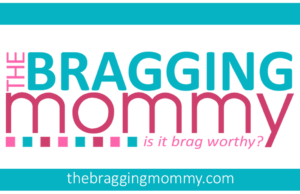A roof is one of the most important parts of any home, offering protection from the elements while contributing to energy efficiency and structural integrity. Over time, however, even the best roofs begin to show signs of wear and tear. Homeowners who ignore these warning signs may face costly repairs, interior damage, and even safety hazards. Knowing when a roof replacement is necessary can help prevent unexpected problems and maintain the value of a home.

Many homeowners delay replacing their roof because they believe repairs will be enough to fix the issue. While minor damage can often be addressed with roof repair, there are times when replacement is the best long-term solution. Curling shingles, persistent leaks, and sagging rooflines are all indicators that a roof may have reached the end of its lifespan. Identifying these issues early ensures homeowners have enough time to plan for a replacement before severe damage occurs.
Understanding when to invest in a new residential roofing system can prevent expensive repairs and protect a home from further damage. Whether a roof is reaching the end of its expected lifespan or showing visible signs of deterioration, recognizing the warning signs is crucial. Working with a trusted professional, such as Best Choice Roofing of East Detroit, can help homeowners determine whether a replacement is necessary.
1. The Age of the Roof
Every roof has a lifespan, depending on the materials used and the climate conditions it endures.
Typical Lifespan of Roofing Materials
✔ Asphalt Shingles – 20 to 30 years
✔ Metal Roofing – 40 to 70 years
✔ Wood Shakes – 20 to 40 years
✔ Clay or Concrete Tiles – 50 to 100 years
If a roof is approaching or has exceeded its expected lifespan, it’s important to assess its condition and plan for a roof replacement before problems arise.
2. Missing or Damaged Shingles
Shingles serve as the first line of defense against weather conditions. When they become damaged, the roof’s ability to protect the home is compromised.
Signs of Shingle Damage
✔ Curling or Buckling – Indicates moisture damage and aging.
✔ Bald Spots – Loss of granules makes shingles less effective at repelling water.
✔ Cracked or Broken Shingles – Leaves the roof exposed to leaks and further deterioration.
While minor issues can sometimes be fixed with a roof repair, widespread damage often signals the need for a full replacement.
3. Persistent Roof Leaks
A leaking roof is more than just an inconvenience—it can lead to structural damage, mold growth, and high repair costs.
Common Causes of Roof Leaks
✔ Damaged Flashing – Loose or cracked flashing allows water to seep through.
✔ Worn Sealant Around Vents and Chimneys – Gaps in seals create entry points for moisture.
✔ Saturated Underlayment – Water-damaged underlayment compromises the roof’s ability to repel moisture.
If leaks continue to appear despite multiple repairs, replacing the roof may be the most effective solution.
4. Sagging or Drooping Roofline
A sagging roof is a serious structural concern that should never be ignored.
What Causes a Roof to Sag?
✔ Excessive Moisture Damage – Weakens support beams and roof decking.
✔ Poor Ventilation – Leads to trapped humidity that breaks down materials.
✔ Structural Issues – Age, poor installation, or excess weight from heavy snow can cause the roof to sag.
A sagging roof may require immediate attention, as it can indicate underlying structural damage that poses a safety risk.
5. Mold, Moss, or Algae Growth
The presence of organic growth on a roof is a sign of trapped moisture, which can accelerate roof deterioration.
How to Identify Harmful Growth
✔ Moss Between Shingles – Retains moisture and can lift shingles over time.
✔ Dark Streaks (Algae Growth) – Often found in humid climates and can weaken shingles.
✔ Mold Inside the Home – If mold is appearing on walls or ceilings, it could be a result of roof leaks.
Routine maintenance can slow the spread of moss or algae, but a severely affected roof may need replacement.
6. Higher Energy Bills
A roof plays a major role in home insulation. When it begins to fail, heating and cooling costs often increase.
How a Failing Roof Affects Energy Efficiency
✔ Inadequate Insulation – Allows heat to escape in winter and enter in summer.
✔ Damaged Shingles and Gaps – Cause drafts and temperature imbalances.
✔ Poor Ventilation – Traps heat in the attic, making air conditioning work harder.
A well-maintained residential roofing system helps regulate indoor temperatures, leading to lower energy costs.
7. Excessive Granule Loss in Gutters
Asphalt shingles contain protective granules that shield them from UV rays and harsh weather.
Signs of Granule Loss
✔ Bare Spots on Shingles – Exposed asphalt is more vulnerable to cracking.
✔ Granules in Gutters – Large amounts indicate significant wear.
✔ Faded or Patchy Shingles – Loss of color suggests aging materials.
Significant granule loss is a clear sign that shingles are nearing the end of their lifespan and may require replacement.
8. Storm Damage and Severe Weather Exposure
Extreme weather conditions can accelerate roof deterioration.
Weather Events That Damage Roofs
✔ Hailstorms – Can dent or crack shingles, leading to leaks.
✔ High Winds – Lift shingles and expose underlayment.
✔ Heavy Snow and Ice – Puts excess weight on the roof and leads to ice dams.
After a severe storm, inspecting the roof for visible damage can help determine whether roof repair or replacement is needed.
9. Water Stains on Ceilings or Walls
Visible water stains inside the home often indicate long-term roof issues.
Where to Look for Signs of Water Damage
✔ Ceilings and Upper Walls – Stains may indicate slow leaks from the roof.
✔ Attic Insulation – Damp insulation is a sign of moisture intrusion.
✔ Peeling Paint or Wallpaper – Can result from hidden leaks behind walls.
If water damage is widespread, replacing the roof may be necessary to prevent further structural harm.
Final Thoughts
Recognizing the signs of a failing roof helps homeowners take action before major problems arise. While roof repair can address minor damage, persistent leaks, sagging, and excessive shingle deterioration often indicate the need for a roof replacement. Ignoring these warning signs can lead to higher energy costs, interior damage, and costly emergency repairs.
Whether a roof has reached the end of its lifespan or suffered severe storm damage, a professional assessment can determine the best course of action. Consulting with an expert in residential roofing ensures that homeowners receive accurate recommendations based on their roof’s condition. Best Choice Roofing of East Detroit provides trusted solutions for homeowners considering a replacement, helping them maintain a durable and well-protected roof.
By staying proactive and addressing roof issues early, homeowners can extend the lifespan of their homes while avoiding unnecessary expenses.



